39 foods that can be dangerous (and even deadly)
Hidden harm

Tatiana_Didenko/Shutterstock
Food is an essential part of our lives, but navigating what is – and what isn’t – safe to consume can sometimes be tricky. According to the World Health Organization (WHO), almost one in 10 people fall ill each year due to eating contaminated food. Certain ingredients are susceptible to contamination and require careful preparation, while others should be avoided altogether. Here, we reveal 39 foods with hidden dangers.
Read on to discover the foods you should approach with caution – counting down to the most potentially dangerous ingredient of all.
While all the foods listed in our gallery can be dangerous in some form, we’ve based our ranking on research and data specific to each ingredient or dish.
39. Kinder Surprise

Ekaterina_Minaeva/Shutterstock
Don’t worry – there aren't any dangerous ingredients in Kinder chocolate. This popular sweet-and-toy combo has been banned in the US since the 1930s because of what’s inside the chocolate shell. Having a non-edible object inside an edible one is classed as a choking hazard by the Food and Drug Administration (FDA). A new version, Kinder Joy, is now on sale in the country, with the chocolate and the toy in separate halves.
38. Jelly sweets
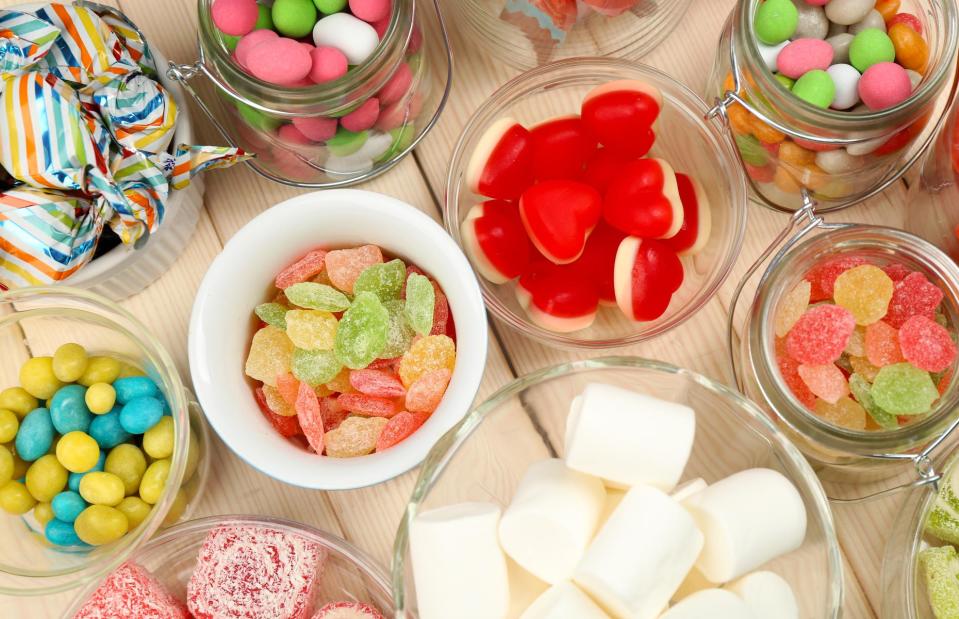
Africa Studio/Shutterstock
Don’t panic if you’re a fan of wine gums – not all jelly sweets are dangerous. Some contain a thickening agent called konjac, which creates a slippery texture and a hard shell, which can be considered a choking hazard. Several countries, including Australia, the UK and those in the EU, have banned sweets like jelly cups, which contain the substance.
37. Hot dogs

NSphotostudio/Shutterstock
Eating the odd hot dog shouldn’t do you any harm – just take it slowly. Hot dogs are a common choking hazard, particularly for young children. The popular snack is the number one cause of food-related choking in young children in the US, accounting for 17% of cases. Hot dogs are also classed as a processed food by the World Health Organization (WHO), linked to increasing the risk of certain cancers.
36. Chillies
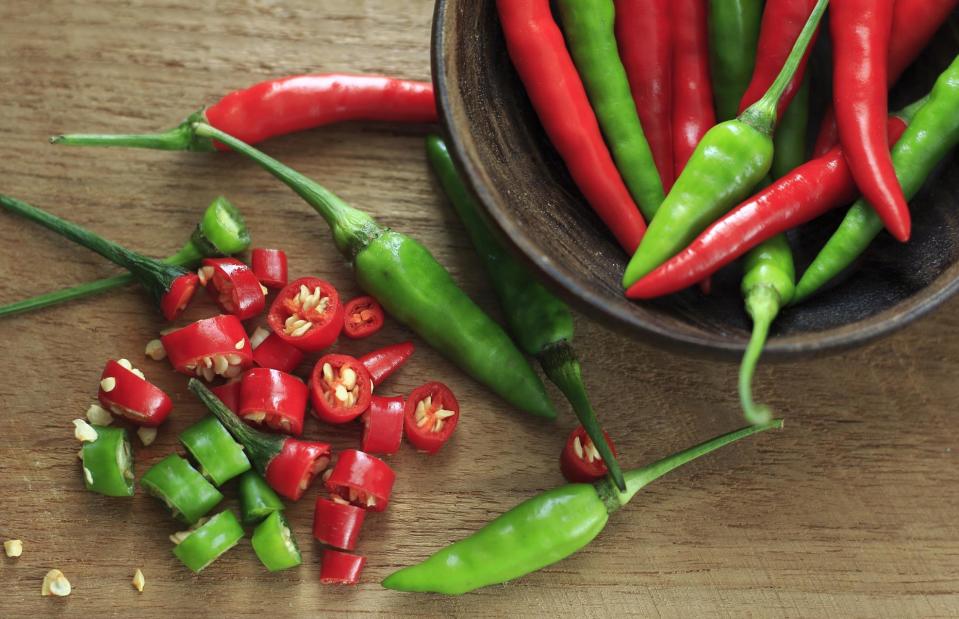
meaofoto/Shutterstock
Everyone has a different level of tolerance when it comes to chillies. Some people can eat a super-hot Thai salad without flinching – while for others, a mild chicken tikka masala is enough to make their eyes water. Chilli peppers can cause other issues aside from a burning sensation, though. In some cases, eating them can cause abdominal pain, cramps and diarrhoea, especially in those who have irritable bowel syndrome.
35. Cookie dough

New Africa/Shutterstock
Licking the spoon may feel like a well-deserved treat when whipping up a cake of batch or cookies, but the Centers for Disease Control and Prevention in the US warn against it. Consuming raw dough can make you sick, as flour sometimes contains harmful bacteria and E. coli, and raw eggs can carry salmonella. Only cooked dough – or cookie dough ice cream – is safe to consume.
34. Bacon

Tatiana Frank/Shutterstock
Don’t panic – no one is planning to ban bacon sandwiches! However, consuming processed meats, including bacon rashers, has been linked to an increased risk of cancer, according to the WHO. Eating 2oz (50g) per day – the equivalent of two rashers of bacon – raises the risk of colon cancer by 18%. If you’re consuming more than that, the risk is said to be even higher. Further studies have shown a link between foods like bacon and sausages and an increased risk of breast cancer. Lower your consumption and enjoy bacon as part of a balanced diet to help reduce the risk.
33. Agave syrup
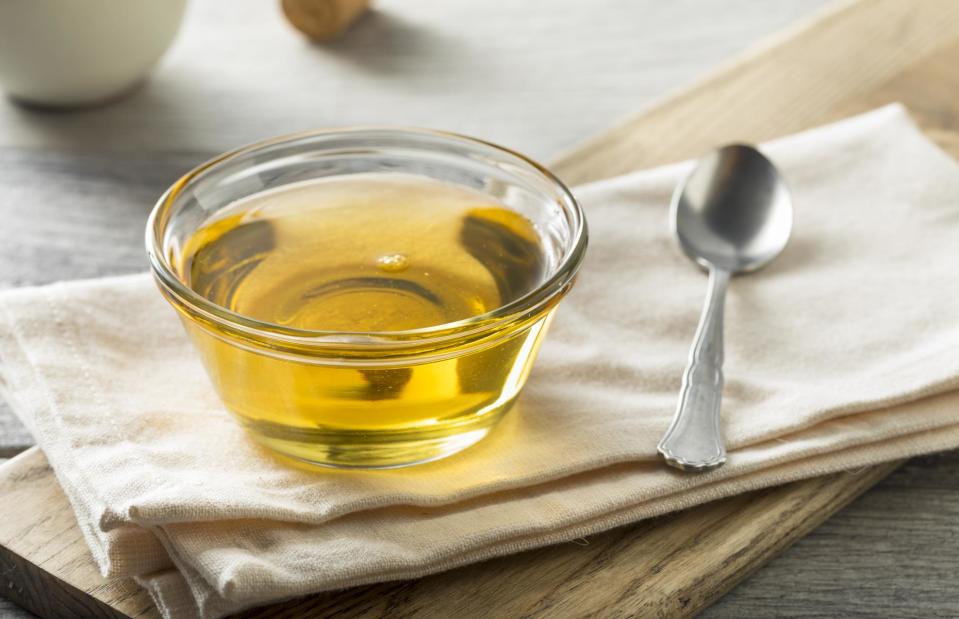
Brent Hofacker/Shutterstock
Agave syrup, extracted from plants native to South America, is often present in health foods as a sugar alternative, since it’s naturally occurring and low in glucose. Nevertheless, it has been suggested that it could be harmful to our health. Agave syrup is high in fructose and, if consumed often, can cause increased belly fat and fatty liver disease. As such, it's best to use it sparingly.
32. Unpasteurised milk
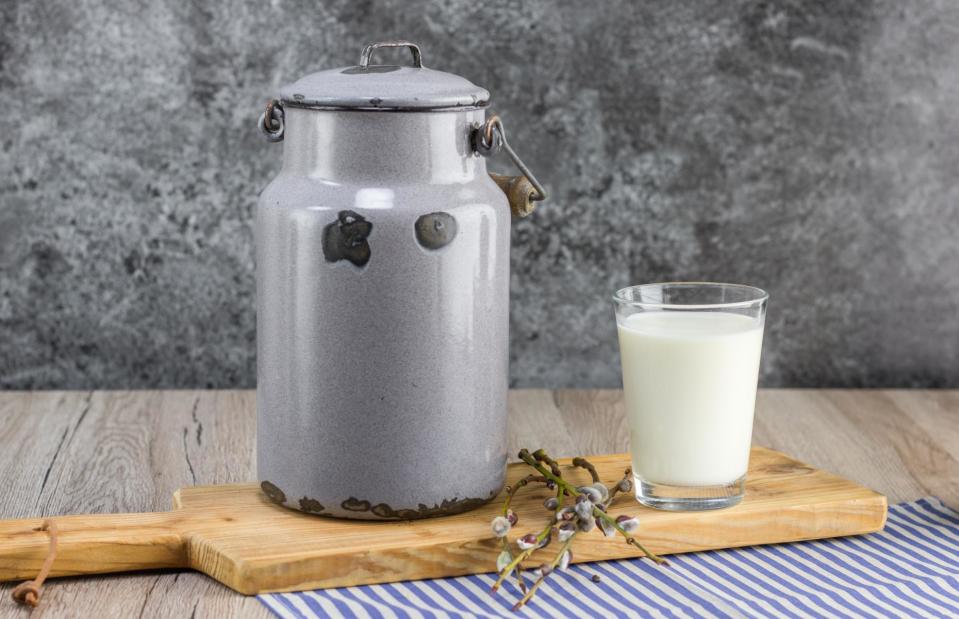
Jaromir Klein/Shutterstock
Drinking raw or unpasteurised milk has become more popular, as some view it as a superfood. However, the UK Food Standards Agency warns against drinking milk that goes 'straight from the cow to the bottle'. It suggests that we should only drink milk that has been heat-treated to kill potential E. coli, salmonella, campylobacter and listeria. Pregnant women, elderly people, young children and anyone with low immunity should definitely avoid raw milk and cheeses.
31. Detox tea

MShev/Shutterstock
Detox teas – and other drinks that claim to bring about weight loss and additional health benefits – should be approached with caution, as some popular natural ingredients carry potential dangers. Many of these drinks contain senna and valerian, which are natural herbs, but can force unnatural weight loss by having a laxative effect. Senna can irritate the digestive system and cause chemical imbalances, and it can also have serious side effects if consumed over a long period. Medical professionals also warned of dangers after a woman became over-hydrated after taking valerian and collapsed with a seizure.
30. Raw sprouts

grafvision/Shutterstock
Sprouts such as clover and mung bean sprouts may seem pretty harmless, but they're grown in warm, humid conditions that allow bacteria to flourish. Bean sprouts have been linked to E. coli outbreaks across the globe, including in the US and Germany. Only consume raw, chilled sprouts labelled 'ready to eat’ – all others should be cooked thoroughly. Children, elderly people and pregnant women should avoid them altogether.
29. Rare beef
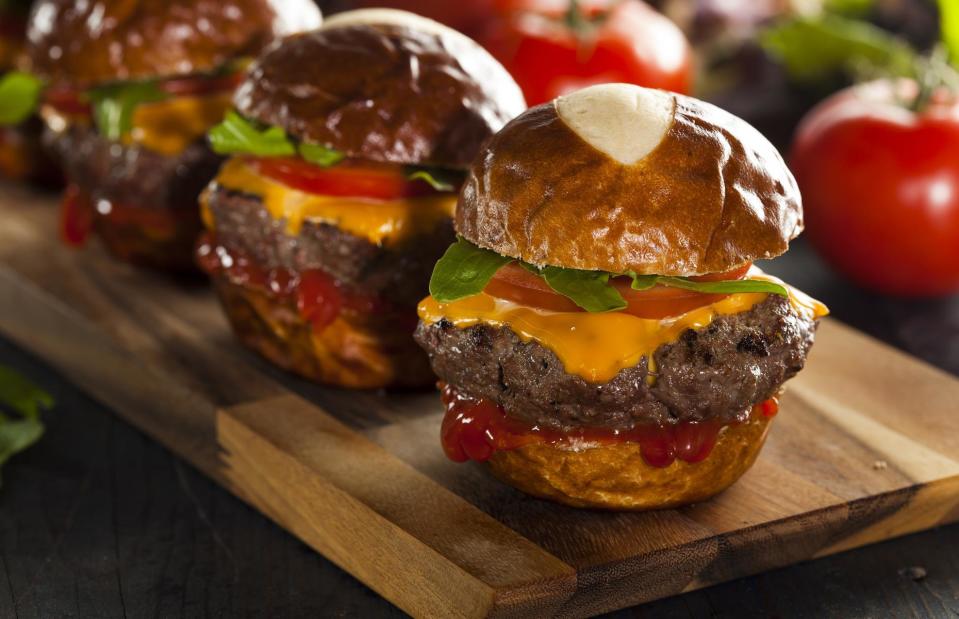
Brent Hofacker/Shutterstock
Consuming rare steak or beef tartare comes with risks attached – especially for children, pregnant women and anyone with a weakened immune system that makes them more susceptible to food poisoning. Beef can harbour bacteria such as E. coli and salmonella, so chops and steaks need to reach an internal temperature of 63°C (145°F) to kill any harmful bacteria, while minced beef should come up to 71°C (160°F). Use a meat thermometer to be sure.
28. Lunch meats
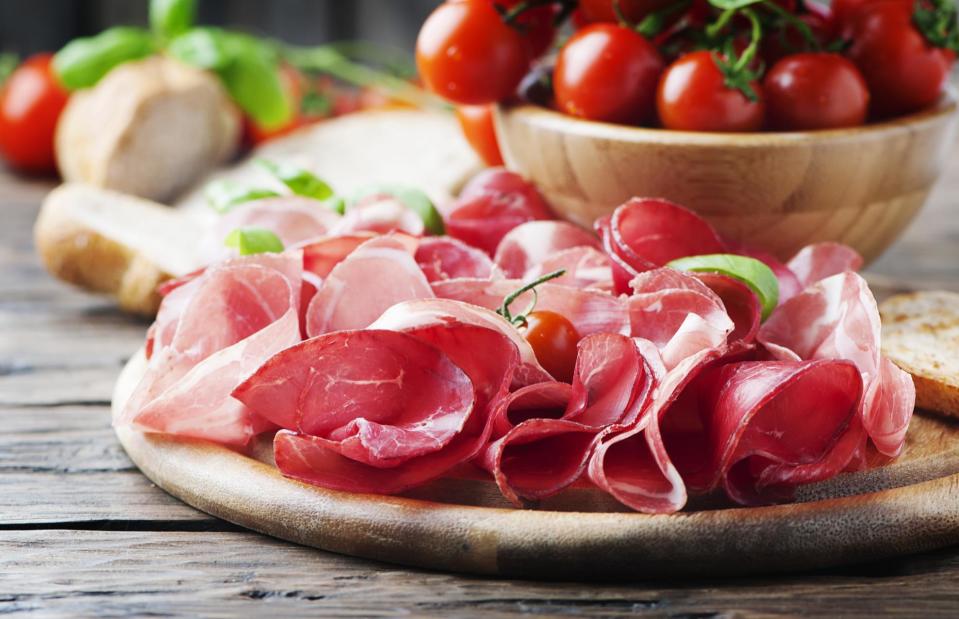
Oxana Denezhkina/Shutterstock
Most deli meats have a high fat content and are classed as processed foods – which are linked to an increased risk of heart disease, Type 2 diabetes and cancer. Some are even cured using nitrites, which are also believed to be carcinogenic. Not only that, but a serious issue can occur when harmful bacteria reach cooked meat before it’s packaged. There have been several reported cases over the last few years, including one in 2018, when deli ham was recalled after a possible listeria (bacteria) contamination. Only consume cold cuts from shops with good food safety standards, and store them according to packet instructions.
27. Romaine lettuce

Alex Staroseltsev/Shutterstock
Leafy greens don’t seem particularly threatening, but crinkly romaine lettuce has been identified as the culprit in a few E. coli outbreak cases, including one that affected people in several American states in 2018. The original contamination was thought to have been caused by animal waste in the soil. While these cases are rare, it’s recommended to thoroughly wash romaine lettuce before eating.
26. Eggs

Tatiana_Didenko/Shutterstock
Eggs are one of the most versatile foods around, but they can also pose a health risk. They can contain salmonella – and when several raw eggs are mixed together, the bacteria spreads. Served as soft scrambled eggs or poached eggs with runny yolks, or in a Hollandaise sauce or mayonnaise, they can make you sick. Cook them fully to be completely sure, and only consume salad dressings and raw egg dishes that contain pasteurised eggs. In the UK, there are several food safety schemes in place to help prevent the contamination of eggs with salmonella, including the British Lion Scheme.
25. Pink pork

kunakunalan/Shutterstock
There's some debate around whether serving particular cuts of pork – like loin – pink should be considered safe. Raw pork can carry a host of risks and bacteria, including trichinosis (known as pork worm), which can cause stomach pain and vomiting, and hepatitis E, leading to inflammation of the liver. Ground pork should be cooked to 71°C (160°F) according to US guidelines, while cuts can be cooked to 63°C (145°F) to retain a hint of pink in the middle. The UK National Health Service (NHS) recommends cooking pork all the way through.
24. Raw cashews
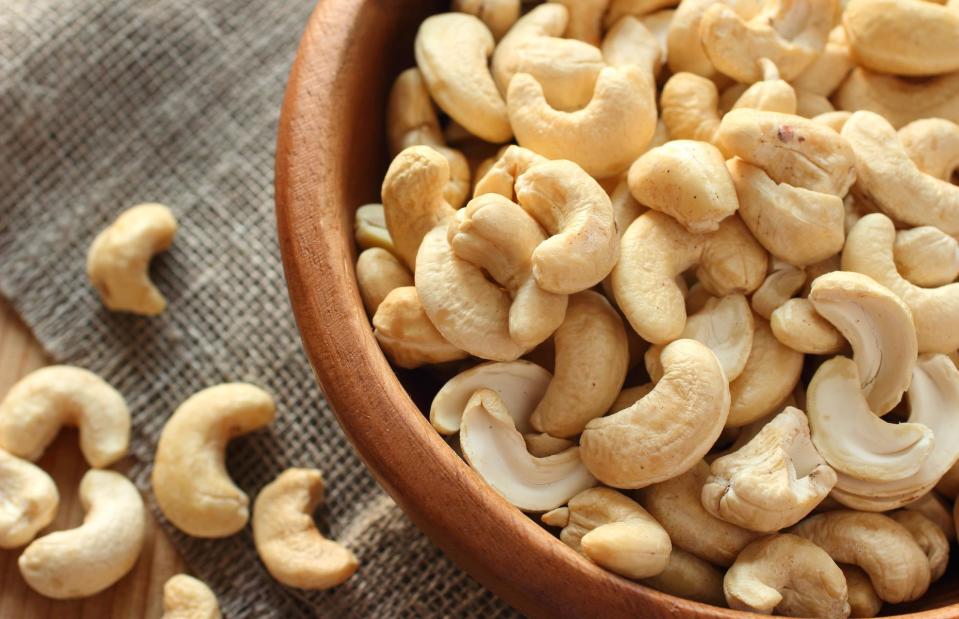
Elena M. Tarasova/Shutterstock
The cashews you find in most shops have been shelled, steamed and roasted, which is just as well. Raw cashews – which are actually seeds harvested from cashew apples – contain urushiol, a chemical also found in poison ivy. The substance, which comes from the shell, is toxic if ingested, and can burn the skin or cause rashes.
23. Chicken
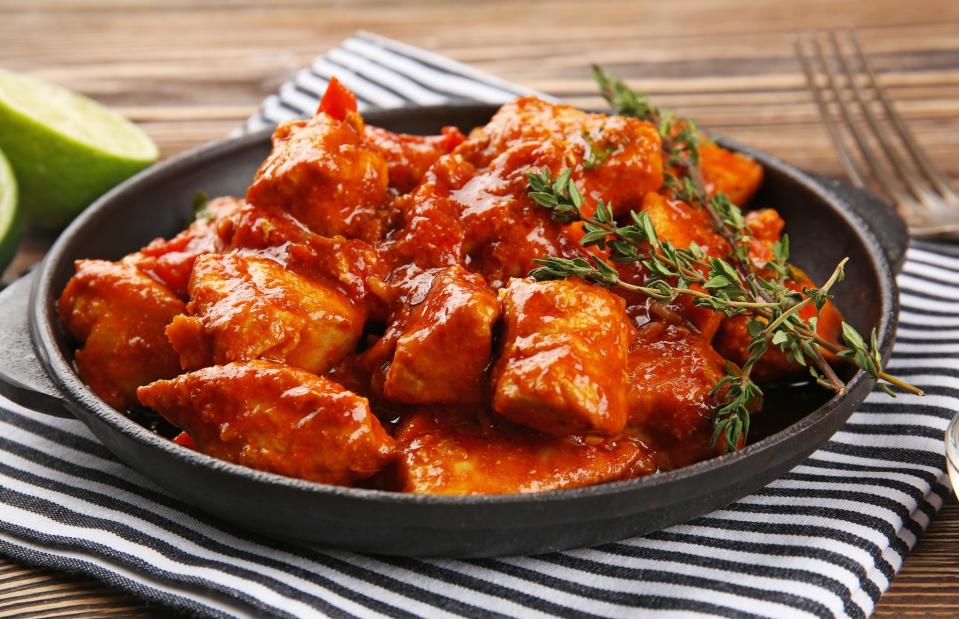
Africa Studio/Shutterstock
Chicken is one of the most popular meats in the world – but it’s also among those that are the most susceptible to contamination, and it can cause health problems if handled and prepared incorrectly. Raw chicken often carries salmonella and campylobacter, which can cause flu-like symptoms, nausea and vomiting. Minimise the risk by never washing raw chicken, using a separate knife and cutting board when preparing it, and by cooking it to an internal temperature of 73.9°C (165°F) every time.
22. Mangoes

Romix Image/Shutterstock
The flesh of a mango is perfectly safe to consume – but, just like raw cashews, the skin, bark and leaves of mangoes contain the chemical urushiol. If you're allergic to poison ivy, eating a mango without peeling it first can cause swelling and rashes, and can even lead to breathing difficulties. With that in mind, and given its leathery texture and bitter taste, it’s worth discarding the skin and sticking to the fruit within.
21. Oysters
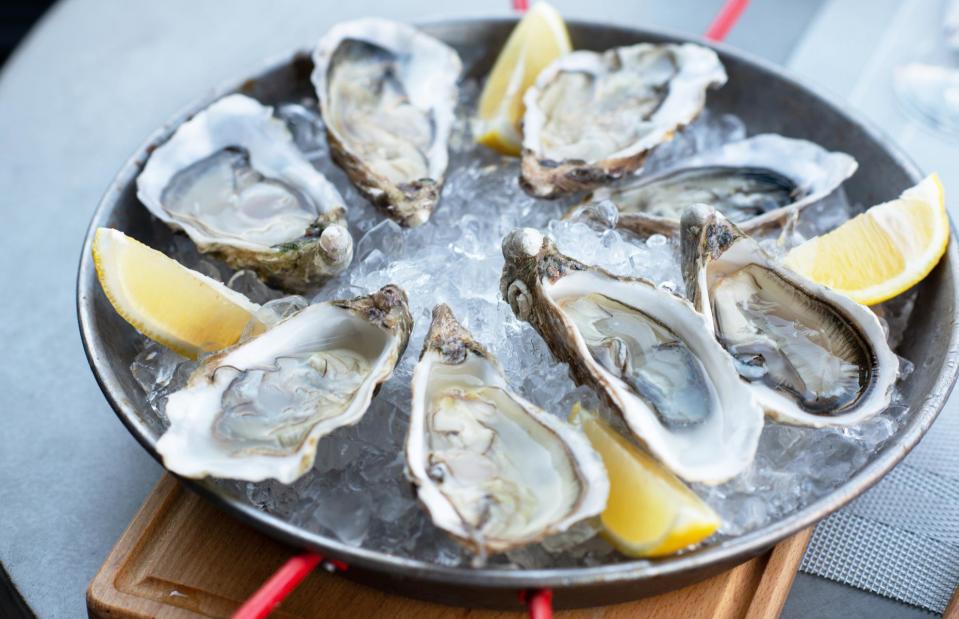
Tuzemka/Shutterstock
Raw is the default way to serve oysters – freshly shucked, on the half shell and with a generous squeeze of lemon. But they can carry harmful bacteria and viruses. In some cases, they can cause vibriosis, an illness with symptoms such as diarrhoea, cramping, nausea, vomiting, fever and chills. In the US, around 80,000 people get vibriosis annually. Cooking your oysters will kill the bacteria and help reduce the risk.
20. Elderberries

Jaye Thompson/Shutterstock
These deeply pigmented purple berries are believed to contain health-boosting antioxidants. However, the plant they grow from contains the far less desirable cyanide. It’s unlikely that you'd intentionally ingest the leaves, twigs, roots and seeds from an elderberry bush, but it’s worth taking the time to separate out the fruit. It's also advised to avoid eating the berries raw, as they contain a toxic substance that can cause nausea and diarrhoea.
19. Raw butter beans

marilyn barbone/Shutterstock
Dried butter beans contain the chemical linamarin, a compound known to release cyanide when digested. If you don't want to get sick, you'll need to prepare your butter beans properly before you dig in: soak them overnight, drain and rinse them, then simmer them in water or stock for an hour. Alternatively, opt for tinned butter beans, which are pre-cooked and safe to eat straight from the can.
18. Raw bamboo shoots

Jiri Hera/Shutterstock
A staple ingredient in many Asian recipes, bamboo shoots are generally a great source of vitamins and minerals – and they've been shown to improve gut health and lower cholesterol levels, too. However, consuming them raw and fresh can be harmful; they contain high amounts of toxins, including cyanide taxiphyllin. Boiling them or cooking them thoroughly helps to reduce these levels, making them safe for consumption. Meanwhile, canned bamboo shoots are perfectly safe to eat as they are.
17. Raw cassava
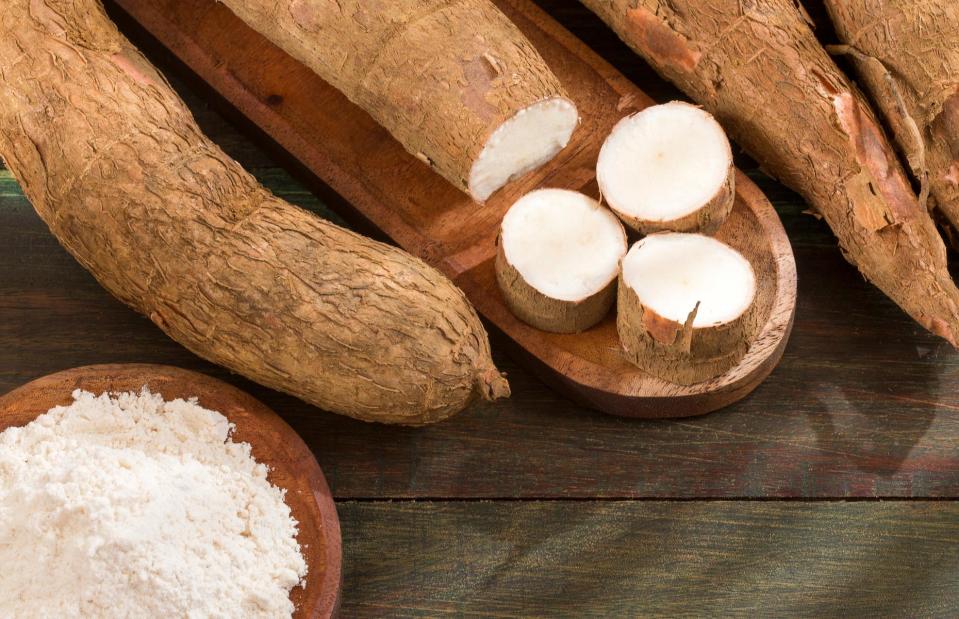
Luis Echeverri Urrea/Shutterstock
Nutty, starchy cassava is a staple in South America, prized for its versatility – it can be used to make anything from flour to chips. However, eaten raw or improperly prepared, these root vegetables can pose a risk. Like butter beans, the tubers contain a compound called linamarin, which turns into cyanide. Cassava is safe to eat when cooked, whether boiled, grilled or steamed.
16. Raw kidney beans
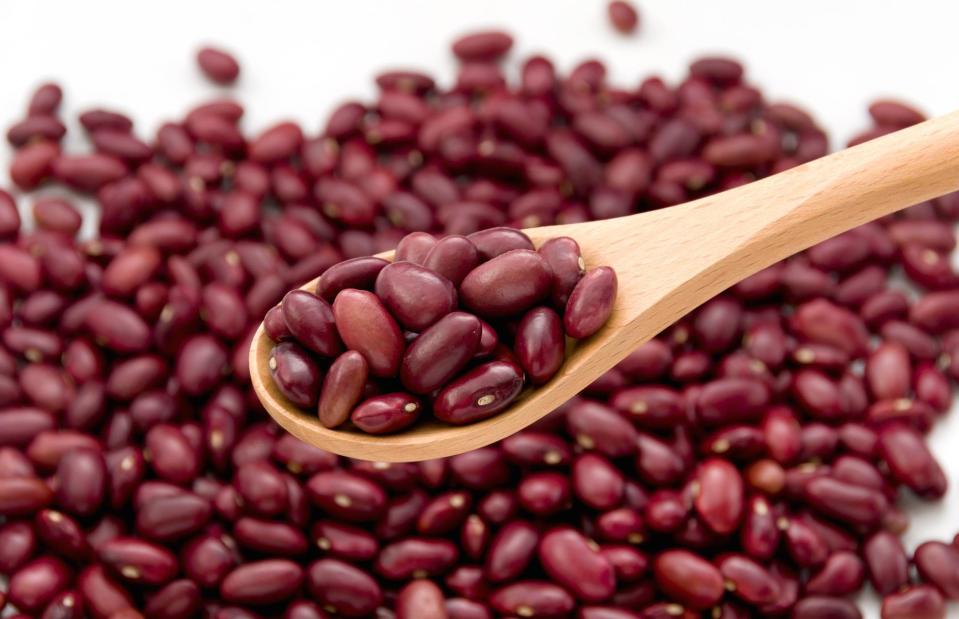
kariphoto/Shutterstock
Raw kidney beans contain a toxin called phytohaemagglutinin (also known as kidney bean lectin), which is poisonous to humans. Research shows that eating just a few raw kidney beans can cause severe stomach pains, nausea and vomiting. Symptoms usually pass fairly quickly, but in rare cases, it can be more serious. It’s easily avoided, though; soak the beans overnight, boil for at least 10 minutes to reduce the toxin levels to harmless, then simmer until cooked.
15. Rice

Amarita/Shutterstock
Rice is one of the world’s staple foods, but studies have revealed that it contains higher levels of arsenic (a cancer-causing toxin that comes from the soil) than many other crops. The effects depend on how much you eat; consuming rice a couple of times a week is unlikely to cause any issues. If cooked rice is left at room temperature or reheated incorrectly, it becomes a breeding ground for Bacillus cereus, which can produce harmful toxins and cause food poisoning.
14. Tuna
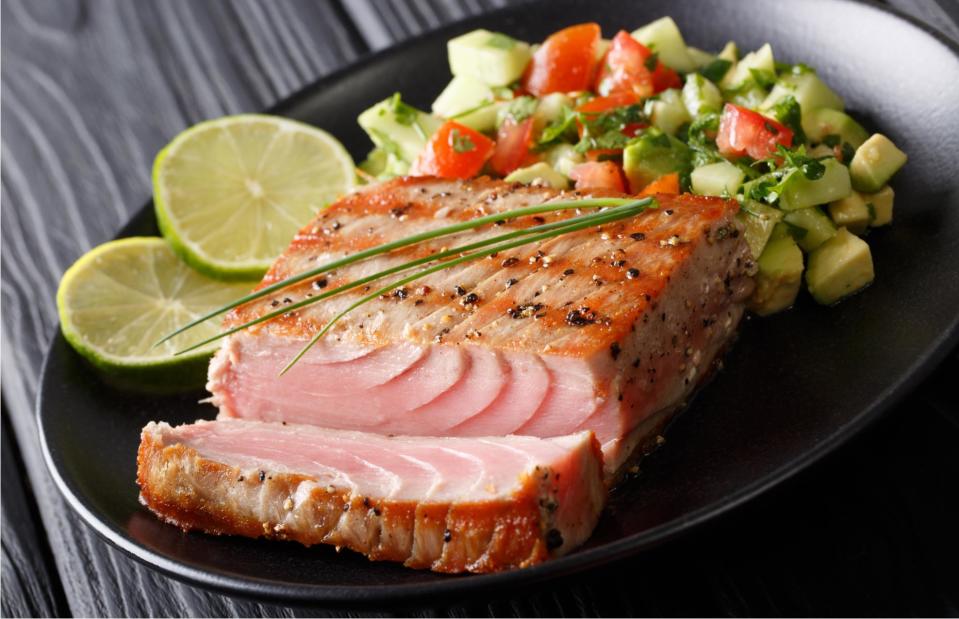
AS Food studio/Shutterstock
Cooking seafood properly is no sure-fire way to avoid sickness. According to the FDA, tuna and other dark-meat fish release a toxin called scombrotoxin at temperatures above 15.5°C (60°F), which can’t be killed by cooking, canning or freezing. Symptoms of contamination can be similar to both food poisoning and an allergic reaction: tingling around the mouth, hives, a drop in blood pressure, dizziness and itchiness, followed by vomiting, diarrhoea, respiratory distress and heart palpitations.
13. Sushi
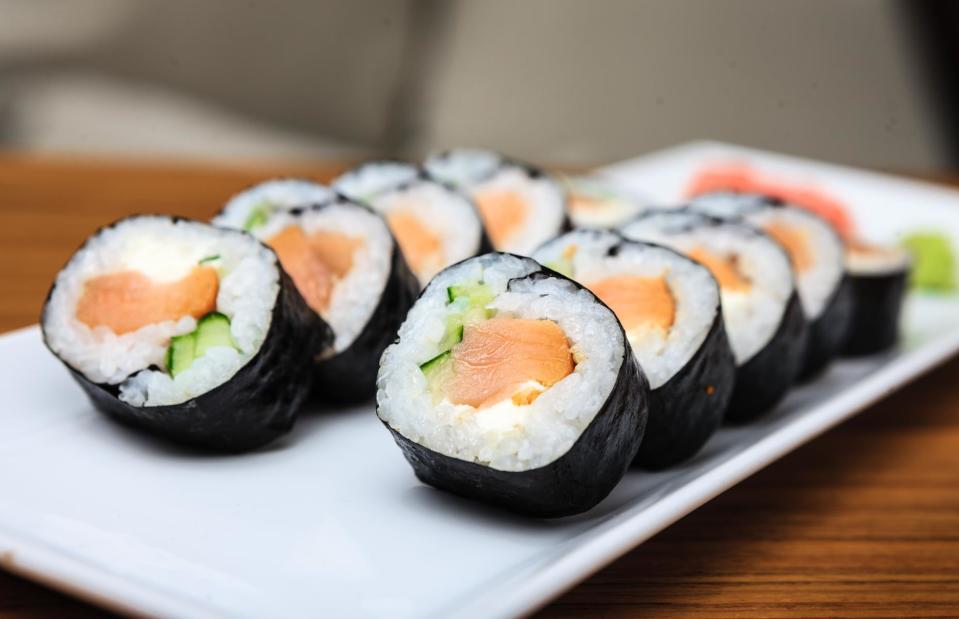
Maksim Toome/Shutterstock
It’s rare that enjoying sushi, poke or ceviche will cause any health issues, unless you have allergies. However, the growing popularity of raw fish dishes has coincided with increased reports of sickness related to worm infections in the last few years. Eating raw, smoked or improperly frozen fish infected with anisakis (herring worm) can cause severe abdominal pain and vomiting, though the worm can’t survive in the human intestine. Reputable sushi chefs are trained to flash-freeze fish to kill parasites, helping to reduce the risk.
12. Casu marzu
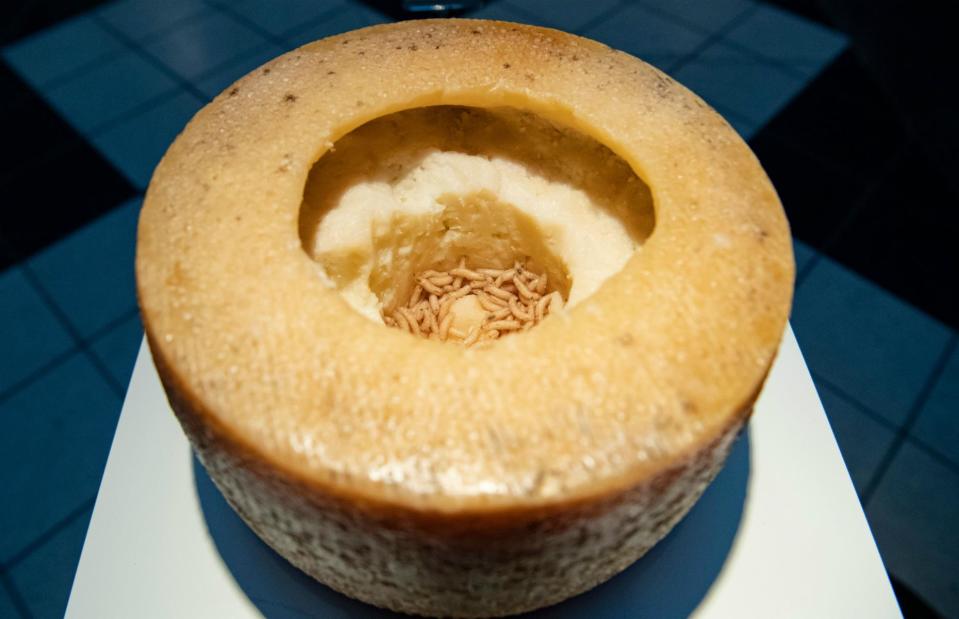
JOHAN NILSSON/AFP via Getty Images
The name casu marzu translates as ‘rotten cheese’. If that isn’t enough to put you off, how about the fact that it contains fly larvae? This soft, gooey hunk is created by leaving sheep's cheese out for cheese flies, which lay eggs inside the rind. When the larvae hatch, they feast on the cheese and break down the fats. It's considered a delicacy on the Italian island of Sardinia, where it’s been made for thousands of years. It’s also considered dangerous to eat (the larvae can cause intestinal damage), and it's illegal to buy or sell.
11. Raw honey
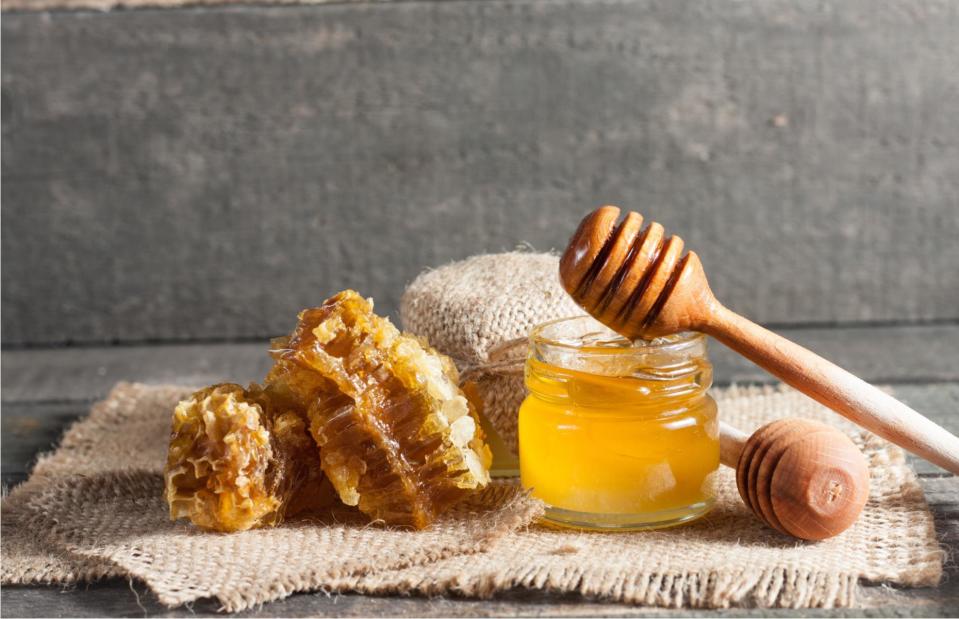
Eugenia Lucasenco/Shutterstock
While most shop-bought honey has been pasteurised to kill bacteria, raw honey – pretty much straight from the beehive – is known to contain more antioxidants, vitamins and minerals. But the potential benefits need to be weighed alongside the risks, as raw honey can contain bacteria spores called clostridium botulinum, which attack the nervous system. It can lead to botulism, a rare type of food poisoning that can cause muscle paralysis and breathing difficulties.
10. Nutmeg

Leonid S. Shtandel/Shutterstock
Grating a little nutmeg over your mac ‘n’ cheese, adding it to gnocchi dough or using it in your favourite mulled wine recipe is very unlikely to have any side effects (other than making things even more delicious). Nutmeg does, however, contain myristicin, a natural compound found in a few plants, which can lead to certain side effects if consumed in large volumes. Symptoms include headaches, nausea, dizziness and hallucinations, and in rare circumstances, it can be fatal. Using no more than a tiny amount is recommended.
9. Rhubarb leaves

Diana Taliun/Shutterstock
Some crops have surprisingly delicious greenery – pea shoots, for example, or radish tops (try blitzing them into a pesto). Rhubarb leaves, however, are not safe for human consumption. The leaves contain oxalic acid, which can form oxalate crystals in your kidneys. Eating those dark, rubbery green bits can affect breathing, cause nausea, create a burning sensation in the mouth and throat and, in extreme cases, lead to kidney failure. Stick to the tart, pretty-in-pink stems.
8. Fruit stones
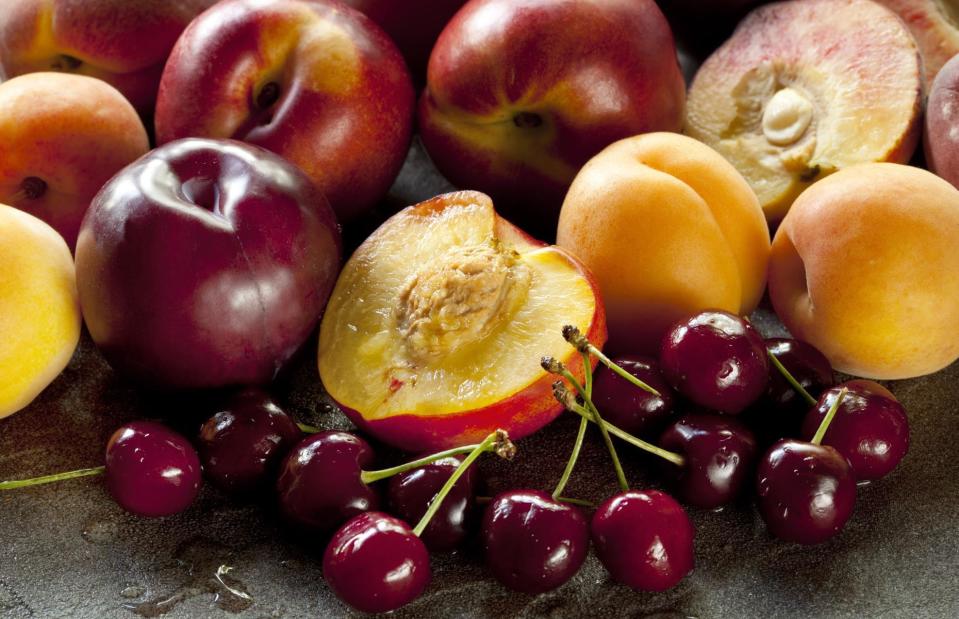
Robyn Mackenzie/Shutterstock
Sure, you probably don't tend to snack on apricot pits or apple pips, but accidentally swallowing or chewing on fruit stones can happen. These stones have been found to contain a compound that turns into hydrogen cyanide in the body. The doses are small, so unless you consume a large amount, the effects are unlikely to be fatal – but it’s worth knowing in case you’re tempted to blitz whole fruits, pips and all, into smoothies.
7. Bitter almonds

Krasula/Shutterstock
Bitter almonds can be used to make almond extract, marzipan and Christmassy stollen. They're also highly poisonous if eaten raw, as they contain cyanide. Consuming anything between six and 10 bitter almonds can cause light-headedness, nausea and abdominal cramps in an adult, and smaller numbers can be fatal for children. They’re safe if cooked, though they’re nevertheless illegal in certain countries.
6. Star fruit
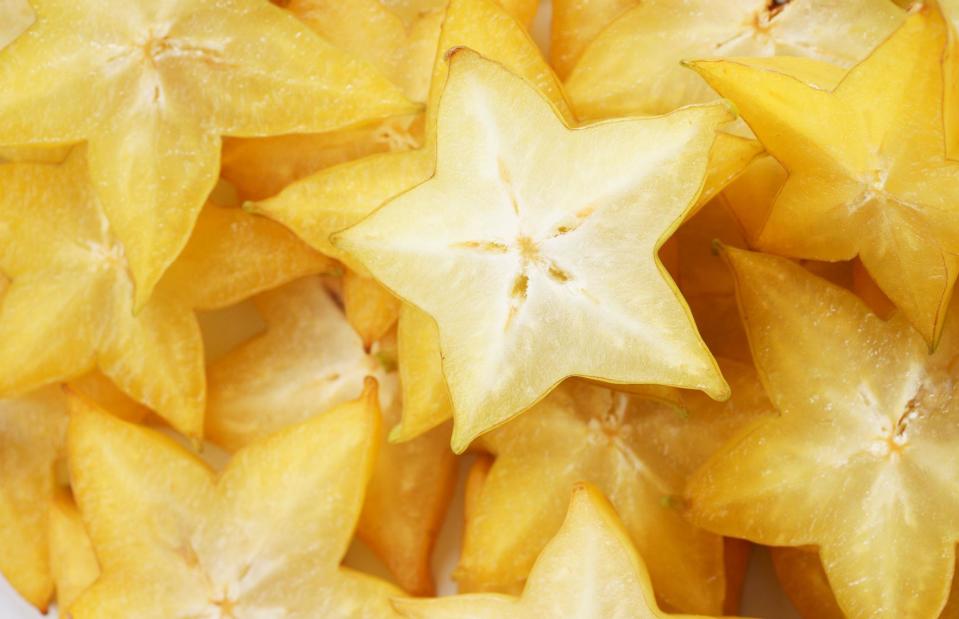
janecocoa/Shutterstock
Bittersweet, apple-like star fruits contain oxalic acid and caramboxin, which – though safe for most of us to consume – can have a toxic effect for those with kidney problems, as they're unable to process it normally. According to the National Kidney Foundation in the USA, consumption of the fruit by those with kidney disease can affect the brain, as caramboxin is a neurotoxin. In some rare cases, it can also be fatal.
5. Green potatoes

Jerawat Suwannitipat/Shutterstock
There’s a reason people say you should keep potatoes in the dark. When exposed to the light, potatoes can turn green due to chlorophyll – and this could signal a bigger problem than them looking a bit unappetising on your plate. It can cause a build-up of solanine, a toxic alkaloid that can cause diarrhoea, nausea, cramping, headaches and, very rarely, life-threatening consequences. Cut away any small green areas before cooking, and completely avoid potatoes that are fully green.
4. Raw ackee

Sevenstock Studio/Shutterstock
A popular ingredient in Caribbean cuisine, this tropical fruit works well as a meat-free replacement for scrambled eggs thanks to its consistency and flavour. It’s perfectly safe to consume ackee when it's fully ripe. However, unripe fruits (along with the rind and seeds) are unsafe; they contain high amounts of hypoglycin A, which can lead to serious food poisoning symptoms, including sickness and exhaustion. In extreme cases, consuming hypoglycin A can lead to a coma, or even death. In most of its raw forms, the fruit is banned in the US.
3. Wild mushrooms
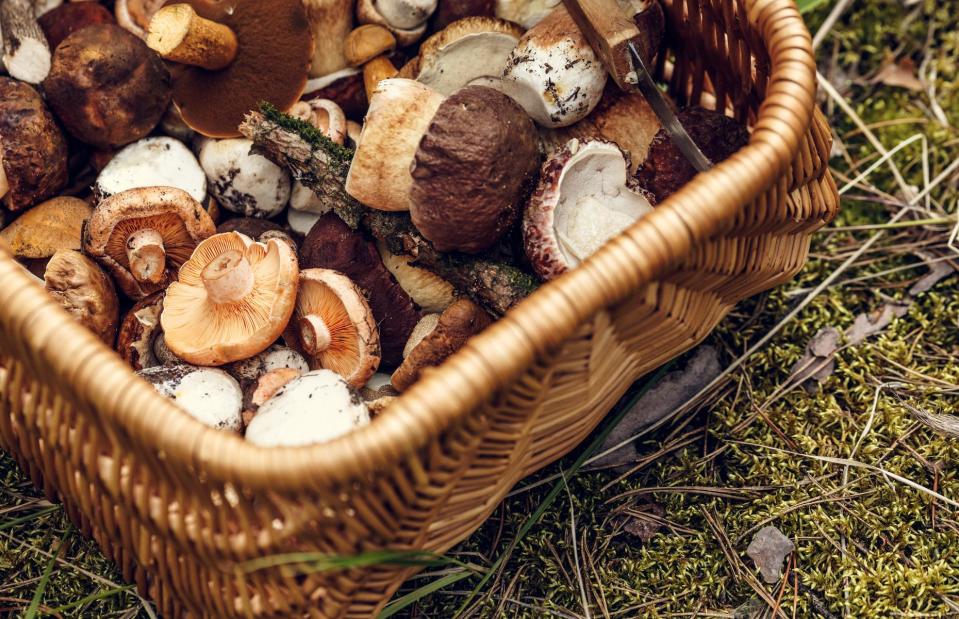
Hortimages/Shutterstock
The last few years have seen a significant increase in the popularity of foraging, but it’s important to know exactly what you’re looking for – especially when it comes to wild mushrooms. Many wild varieties, including fool’s mushrooms and autumn skullcaps, can be harmful (and even deadly) to humans. The death cap is particularly insidious, as it resembles edible varieties and smells good. It should be avoided, though, as it’s highly toxic and can cause kidney and liver failure.
2. Peanuts

kram9/Shutterstock
Peanut allergies are among the world’s most common, with as many as one in every 200 people having a reaction in some countries. While most of us are fine to enjoy chicken satay and peanut butter, the consequences for those who do have an allergy can be lethal. The tiniest exposure to peanuts can cause the throat to swell, to the extent that it’s impossible to breathe. Those with allergies should always read food packaging carefully, notify restaurant staff and carry necessary medication.
1. Fugu

Luxpho/Shutterstock
A type of pufferfish, fugu is a Japanese delicacy, typically served as sashimi. It is, however, highly poisonous, containing a type of toxin called tetrodotoxin. Symptoms can include dizziness, nausea, headaches and breathing difficulties – and in the worst-case scenarios, it can cause death. If you do want to try the delicacy, leave it to the trained fugu chefs.
Now discover the foods you should never buy frozen
Last updated by Jessica Morris.


